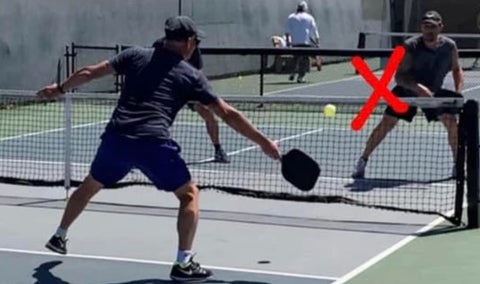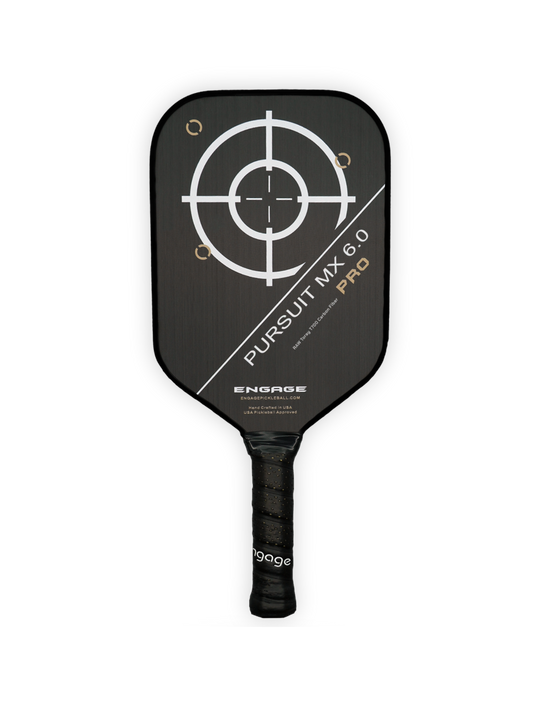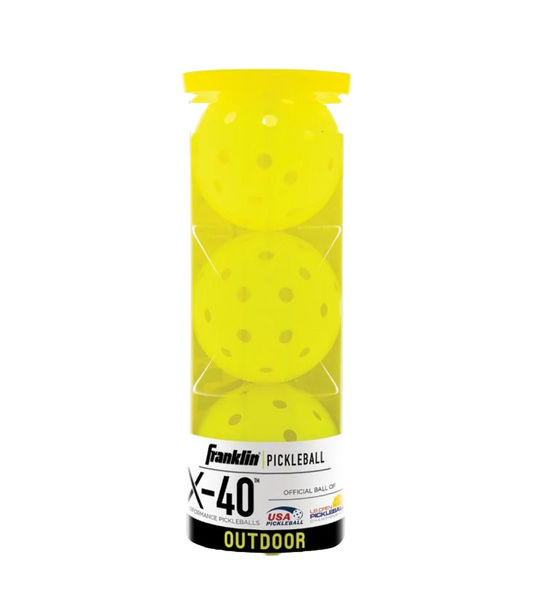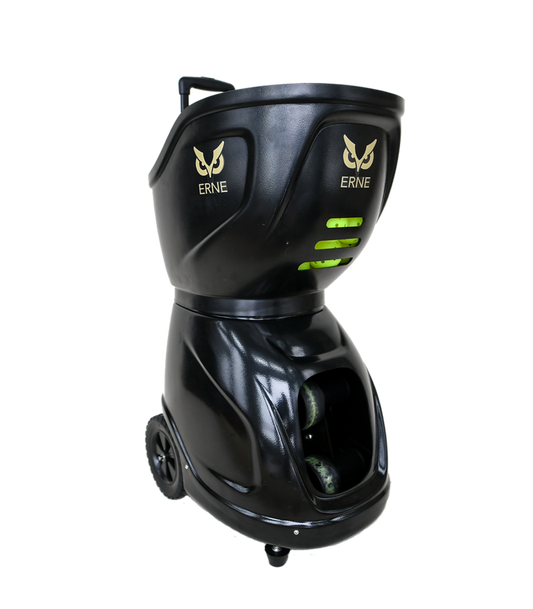In pickleball, who to attack, when to attack, and where to attack is determined within a 100th of a millisecond. Same for who, when, and where NOT to attack.
Looking for “tells” or clues as to what strategy to take in that split second requires a ton of practice and doesn’t always happen consciously. You’ll learn to pick up on things without knowing you’re actually seeing them.
Very often, you’ll notice multiple cues in an instant that’ll lead you to the highest percentage decision.
Most pickleball amateurs unfortunately go with the popular attack strategy of, “See ball, hit ball…hard!”
Not the most efficient way of executing attacks.
Check out the screenshot of this attack. What do you see that indicates the “X” is probably the highest percentage shot?

The first thing I noticed was the lean of the attacker. He’s reached enough out wide enough that his left foot has come off the ground - his momentum is ultimately going to fall to the right, leaving him vulnerable to a counter-attack if he doesn’t hit the correct spot.
If I’m the attacker, this is the first clue I feel in my body that’ll help dictate where I initiate.
Secondly, check out the posture of the opponent straight ahead of the attacker.
- He’s anticipating line (because the attacker is leaning wide and reaching). Probably the correct read.
- His weight has already shifted to respond with a BH counter and he’s locked and ready.
- He’s loaded his left leg, leaving minimal weight of his right, and his paddle is in BH, anticipating the counter.
Thirdly, the middle looks open, and maybe it is (if he can roll it perfectly low and in between his two opponents).
The cross court opponent’s left foot is already over the center line, preparing to cover. He might be baiting a middle attack.
If I’m attacking here, I’ll need to see this and before starting this hands battle, in that 100th of a millisecond, want to know three things:
- Does my opponent have a two-handed counter? If he does, I’m not firing this.
- Is he a lefty? If yes, I’m not firing this.
- Can I recover for my re-counter follow up?
My cross court opponent would have to have a weak one handed counter, be a natural resetter, or I’d need to know I can effectively hit a great low roller for me to have confidence in winning this exchange through the center.
Lastly, the attacker needs to have a partner with above average hand speed, because from this ball position and angle of attack, it could easily be countered through him.
I know, I know…reading this and digesting all the possible options is a difficult task. Super difficult, and feels impossible, I get it.
In real time, with a ton of practice, these decisions are made at a speed faster than we can consciously compute.
We begin seeing everything I wrote without even knowing we’re seeing them. Again, though, after we’ve put in hours of work, intentionally rehearsing these types of decisions.
Read Next: An Elite Pickleball Maneuver: the V-Lock
Your biggest and easiest competitive advantage comes from DOING this type of work.
Your opponents, as 98% here, after reading this, will not want to put in this type of effort.
Dayne Gingrich is a Mental Performance Coach. Follow him here.




